Back in the late 90s/early 2000s, there were a precious few pillars of anime that were holding up the small community of fandom. This was just before the days of bittorrent and WAY before today where you can legally stream even the jankiest of "I want to have sex with my sister" anime. If you were like me and had no idea where to even find anime bootleggers in the middle of someplace like Nebraska, you were kind of at the mercy of the rental shelves in your local comic store, and they had Akira, Dragonball Z, Neon Genesis Evangelion, and some extremely cheap and violent titles that would define the medium to teenage Americans for better or worse. Somewhere in the corner was Serial Experiments Lain, a cult classic of such supreme weirdness that many of its viewers recommended it to other people just so they could have someone else to help figure out what the hell it was they just watched.
Lain is like if David Lynch and David Cronenberg had an insane, Japanese cyberbaby. Obtuse, freaky, and absolutely fascinating, it is a heavily atmospheric series about the ways the Internet has crashed into the real world. Utilizing pseudoscience, parapsychology, telekinesis, humans meshing with technology, aliens (?), and two dozen conspiracy theories, Lain came out at just the right time as the Internet was about to explode into this irreplaceable piece of our lives it is today. Not to mention its American popularity was probably bolstered by having one of the greatest anime openings of all time headed by the song "Duvet" actually sung in English by British indie band bôa. A friend of mine and I were once looking through blankets at a department store, came upon one with the label "Duvet," and simultaneously broke into ♩And you don't seem to understand…♩
Getting into the brass taxes, the series follows a middle school girl named Lain Iwakura whose life is getting a little strange. She hallucinates invisible people walking through the halls, reality occasionally dissolves around her, she seems to be followed by mysterious men in black as she walks home, and most pertinently, an acquaintance has committed suicide and then after her death, sent an e-mail to Lain saying she downloaded her conscious into the Wired (This series' stand-in for the Internet) and that God is there.
Upon receiving the e-mail, Lain gets her father to upgrade her computer in order to plunge into the Wired and see what's going on. She discovers she's an adept computer user and diving through the information, finds a series of bizarre incidents happening in the virtual world that are breaching into the real world. At the same time, a second Lain has begun showing up in the real world. Where the first Lain is quiet, withdrawn, and awkward, the second is brazen, loud, and sociable to the rave culture.
That's about as far I can go without completely getting off topic. We have to steer this back to Ryutaro Nakamura eventually, right? The series has the fingerprints of writer Chiaki J. Konaka. Konaka is a unique writer whose presence can be immediately felt, especially if the project is a collaborative effort. If you're watching an anime series that is straightforward and suddenly becomes ponderous, it's not quite clear what exactly is happening, and there's internal monologue about the nature of life or complex psychological/scientific concepts, it's probably Chiaki Konaka. Or Hideki Anno having another mental breakdown. The look of the series was heavily influenced by artist Yoshitoshi ABe (The capital B is his choice, not my error). ABe's work is very detailed, tends to use a lot of shadows, and is very eye catching, hence why it's all over the DVD covers. Here, you'll see what I mean:
Not bad, right? So, where does Nakamura fit? I find Nakamura tends to be the glue that holds his projects together. Not really an auteur, he seems to more realize the potential of a project and is able to deliver on the potential. If there are things I can attribute to his style, it's the use of overexposed light and uniquely weaving overlaying text into the narrative, but those can be attributed to his collaborators ABe and Konaka, respectively.
The problem with Ghost Hound, one of his last projects, is its lack of distinctiveness. The script once again is by Konaka who mashes in a smorgasbord of topics like out-of-body experiences, psychology, quantum physics, the spiritual world, bio technology, hypnotherapy, and God knows what else into a story of a kid who survived a kidnapping and can now leave his body and see the surprisingly busy spiritual world that exists in his quiet town. For the hodgepodge of topics that went into it, it's surprisingly very coherent, but that sentence describing the plot? That development takes three episodes when it normally takes about one. This is where atmosphere and character is essential, and the artistic direction is too bland to hold the atmosphere aside from the cool jazz opening that has more flavor in the first two minutes than the whole show combined. The characters aren't particular notable, so much so that around 5 or 6 episodes, in order to properly get information across, they have to call in… DOCTOR BOOBS!
Seriously. But still, when it comes to putting together something like Lain, all the credit in the world to Nakamura for being able to take something that has a difficulty rating of about 9.5 and delivering on almost everything. The character Lain sometimes gets lost in the shuffle which takes away some of the emotion of the overall project, but that Lain HAS some seriously heavyweight emotional moments at all with everything that's stuffed into 13 episodes is something of an accomplishment. Throughout the series, Lain develops a friendship with classmate Alice who only knows her as the aloof kid who could use some friends. Their friendship is valuable to Lain, so much so that later when she has more influence over the Wired, she tries to erase the fallout from a terrible choice Alice made, but in trying to help her friend, does more to destroy her emotionally. This dynamic is powerful and vital to anchor the series emotionally in its climax, and that this Nakamura can handle such a small but vital thing while still keeping the big picture in focus in one Lain largest successes.
Switching gears, Ryutaro had another masterpiece that hasn't quite made the impact Lain has, but some of us are working on it. I know anime is weird and foreign to a lot of Americans and there are few titles out there I can just tell everyone to watch right now. Kino's Journey is one of them. You. You right there. Your life would benefit greatly from watching Kino's Journey. It's pretty dang cheaaaaap! The best outcome is your life will change and the worst outcome is you'll find it kind of "meh."
Kino is as straightforward and earthbound as Lain is bizarre. Based on a series of light novels by Keiichi Sigsawa, the series follows the titular character as she travels with her talking motorcycle (Yes, the motorcycle talks! You'll get used to it!) to the various countries of a fantasy world, some pre-industrial and rustic, some with technology beyond what we have today. Each country has a story and Kino spends three days in each to discover it. It's hard to describe without watching it, but my best stab at it is a more down home Twilight Zone. The countries Kino travels to are largely built on one fundamental and the series does its best to turn it on its head, and while not telling you what to think, it emphasizes the importance of thinking about the world you live in.
That's not to say Kino's Journey is just bland nutritional food. Like the best Twilight Zone episodes, each episode is a little puzzle box that is solved bit by bit and fills out the story with characters who both fit into the fantasy world and feel real. Kino is no blank slate for the audience to put themselves in. She has a backstory and a particular attitude and is actually one of the best characters in anime, even if she is mostly a casual observer and only intervenes when she absolutely must (And she must in more ways than she'd like because story conflict has its demands).
While most people can pull the "book was better" route, the TV series makes some changes that actually improve it. For example (And this is a spoiler of the first episode), in "The Country of Shared Pain," the episode revolves around a country that is dying out because the people simultaneously took a drug that made their thoughts visible to each other. The story of the country is distilled by a single man who recounts the how a woman in town realized he was in love with her and how the relationship fell apart because they couldn't hide their thoughts from he each other. He didn't like her gardening, she didn't like his music, the things they hated about each other couldn't be hidden and couldn't be reconciled, and so on and so forth.
The book ends the story with the man begging Kino to stay and Kino simply riding off to her next journey. In the show, as he's begging her to stay, she notices he's planted a rose garden. They have a look that acknowledges what she just noticed, and she moves on. However, not before passing by a house with a rose garden that has the silhouette of a woman who happens to be listening to a record that sounds very similar to the one Kino listened to while talking to the man.
It's an incredibly thoughtful touch and one that shows that entertainment that is smart doesn't always need to take a darker step to be such. Not to say there aren't extremely dark moments in Kino's Journey because there are. It simply embraces all of humanity instead of some it. It lives by its most memorable line: "The world is not beautiful; and that, in a sense, lends it a sort of beauty."
Nakamura handles the story with a very deft and subtle touch. The visuals are not amazing, but their water color sensibilities mix with solid fundamentals to give the feeling of a fanciful and unfamiliar world while keeping it grounded in reality. The narrative is many times straightforward, but its quiet moments are supplemented by times when the screen goes to text with ambient music. Sometimes it's replaying what was previously said, sometimes it's dissecting what was previously said, sometimes it's thinking about what it all means. It never acknowledges whether it's Kino thinking of these things or whether it's this disembodied force or what, but it mimics the way people mull over things in their head when they travel. This makes the show feel like you're taking the journey with Kino.
Yeah, Nakamura doesn't have a signature style or anything that makes a series"Nakamura," but when you've made two of the best examples of your craft and you know what the series that have potential need, does it matter? I'm sad that Nakamura was going to get the Lain band back together to make a series Despera, and because of his health, that never happened. For what we didn't get, we have some fantastic works that I'd like to thank Ryutaro Nakamura for wherever he is, and may he rest in peace.
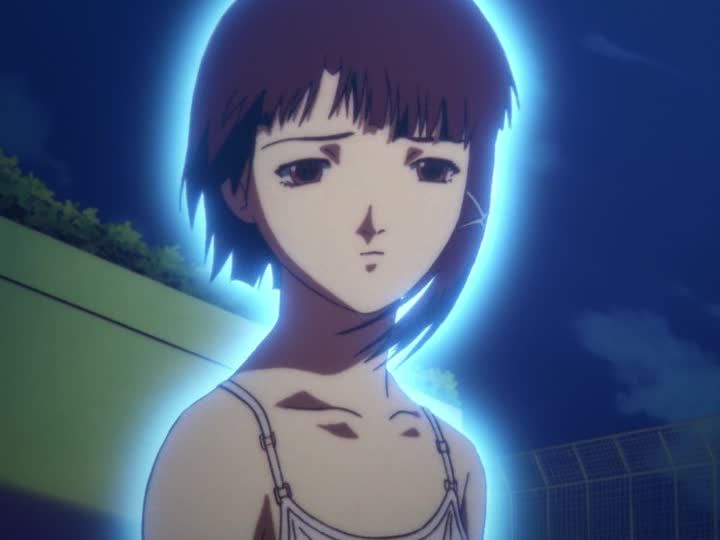
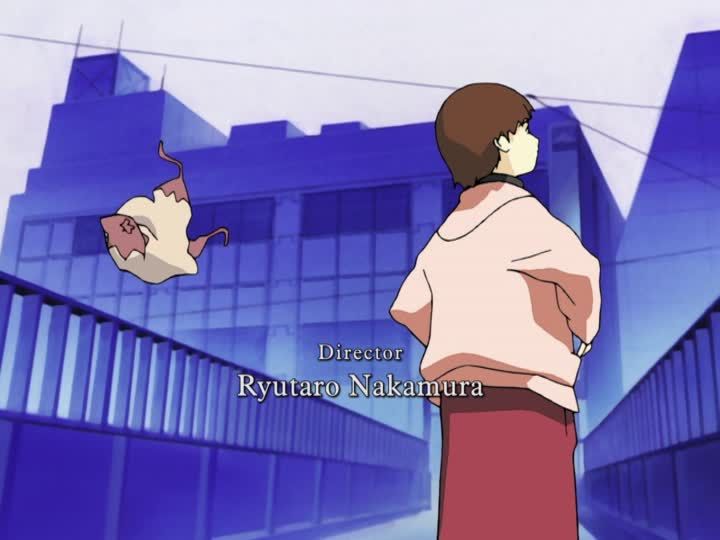
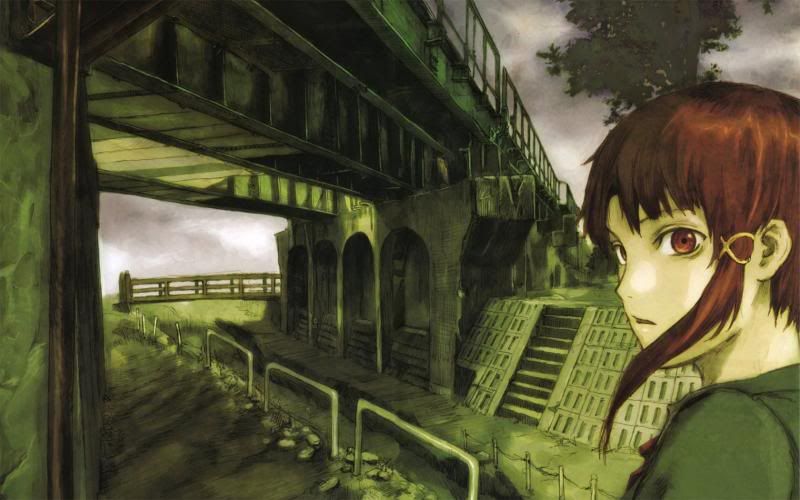
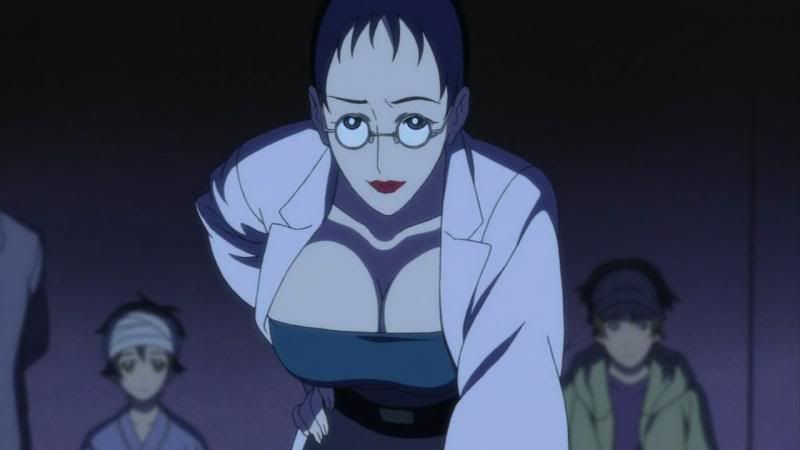

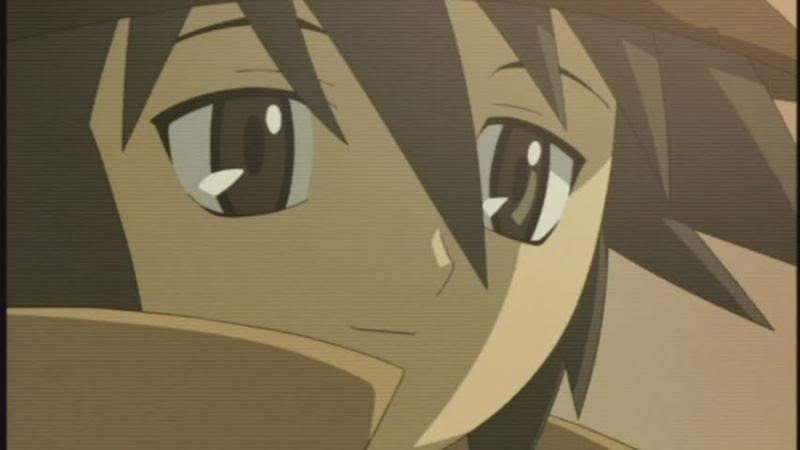
No comments:
Post a Comment